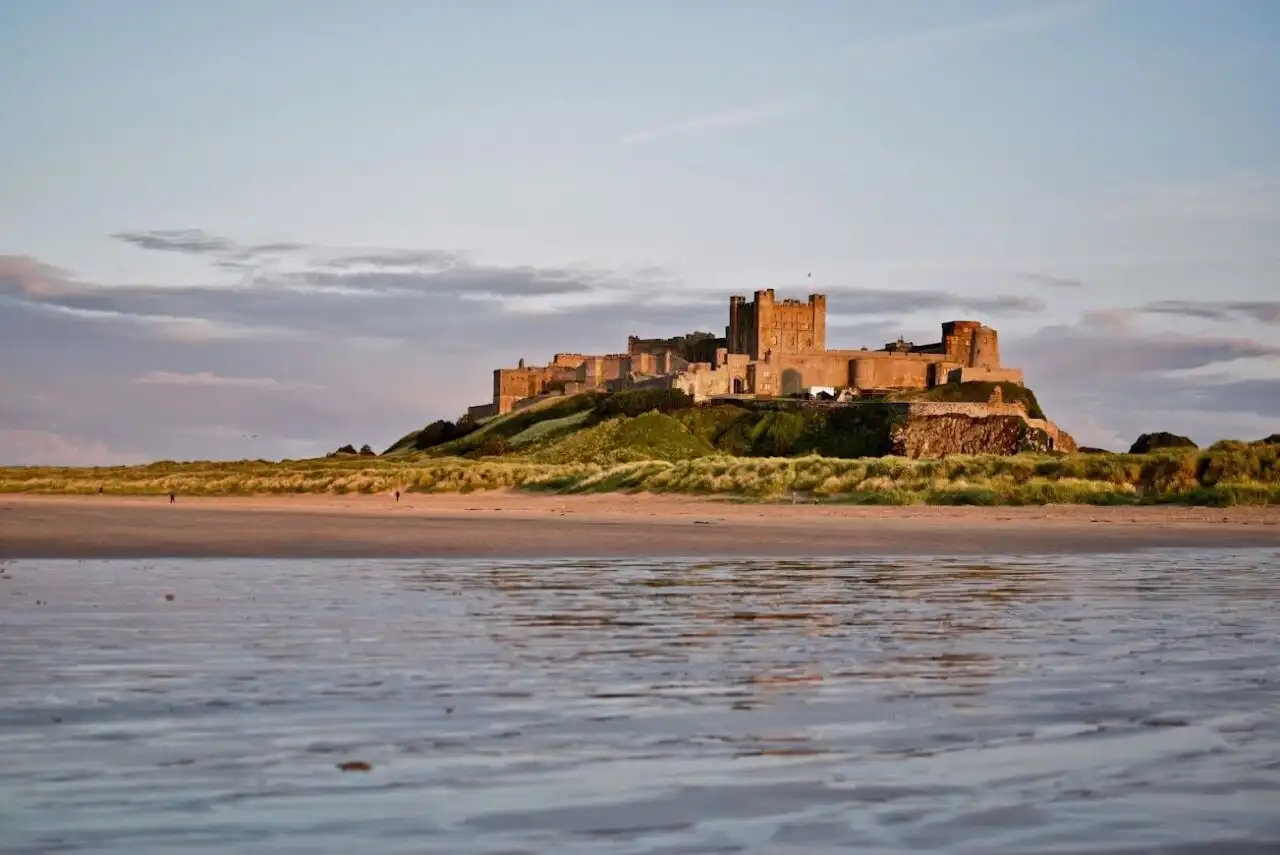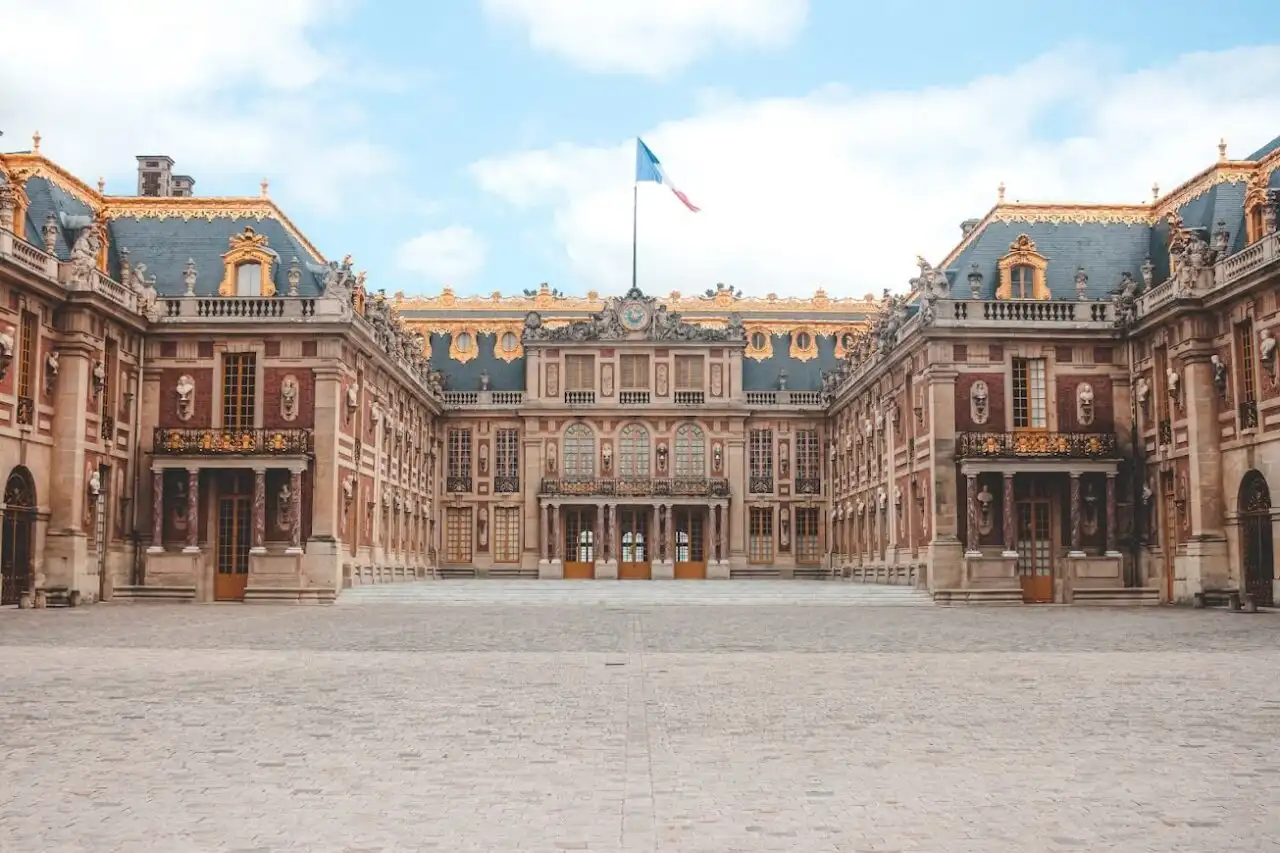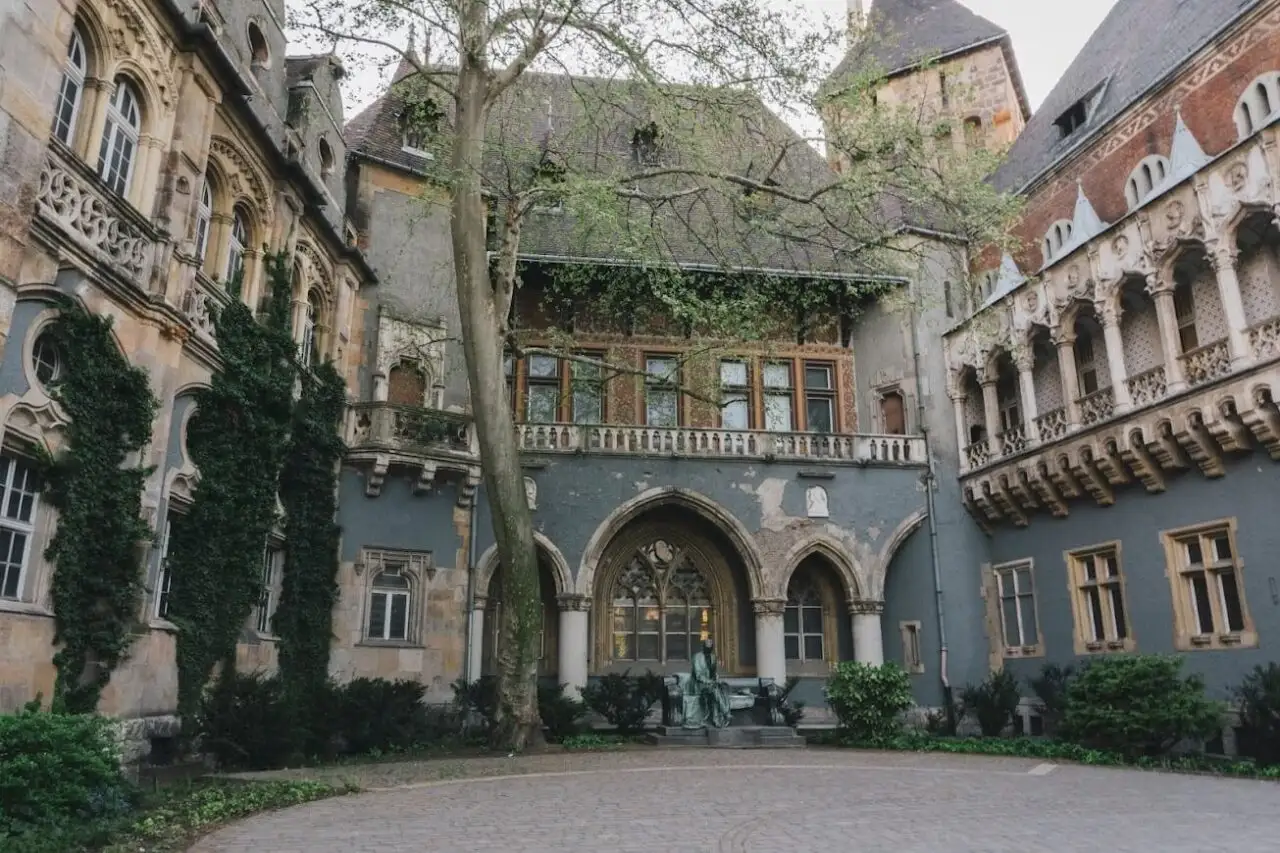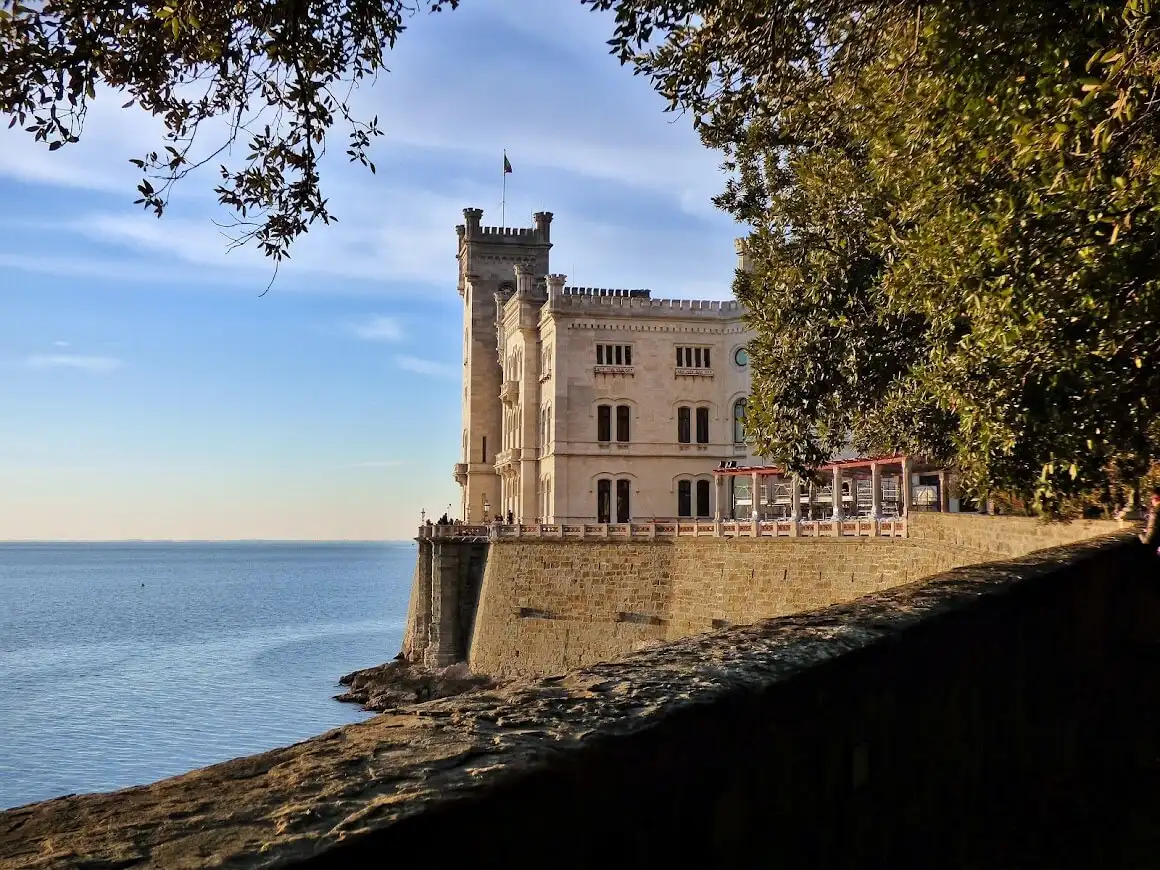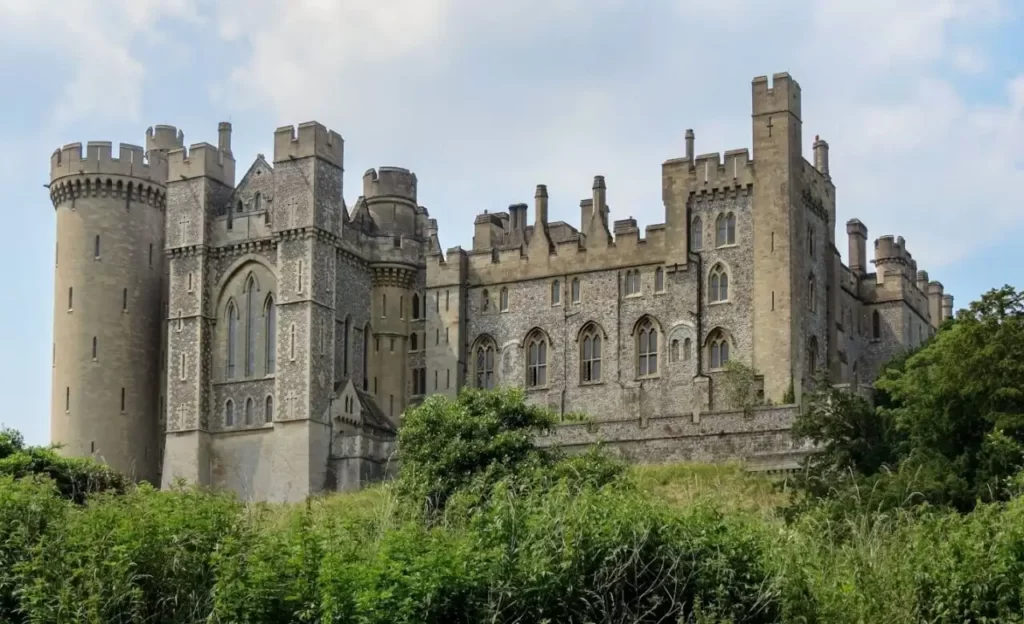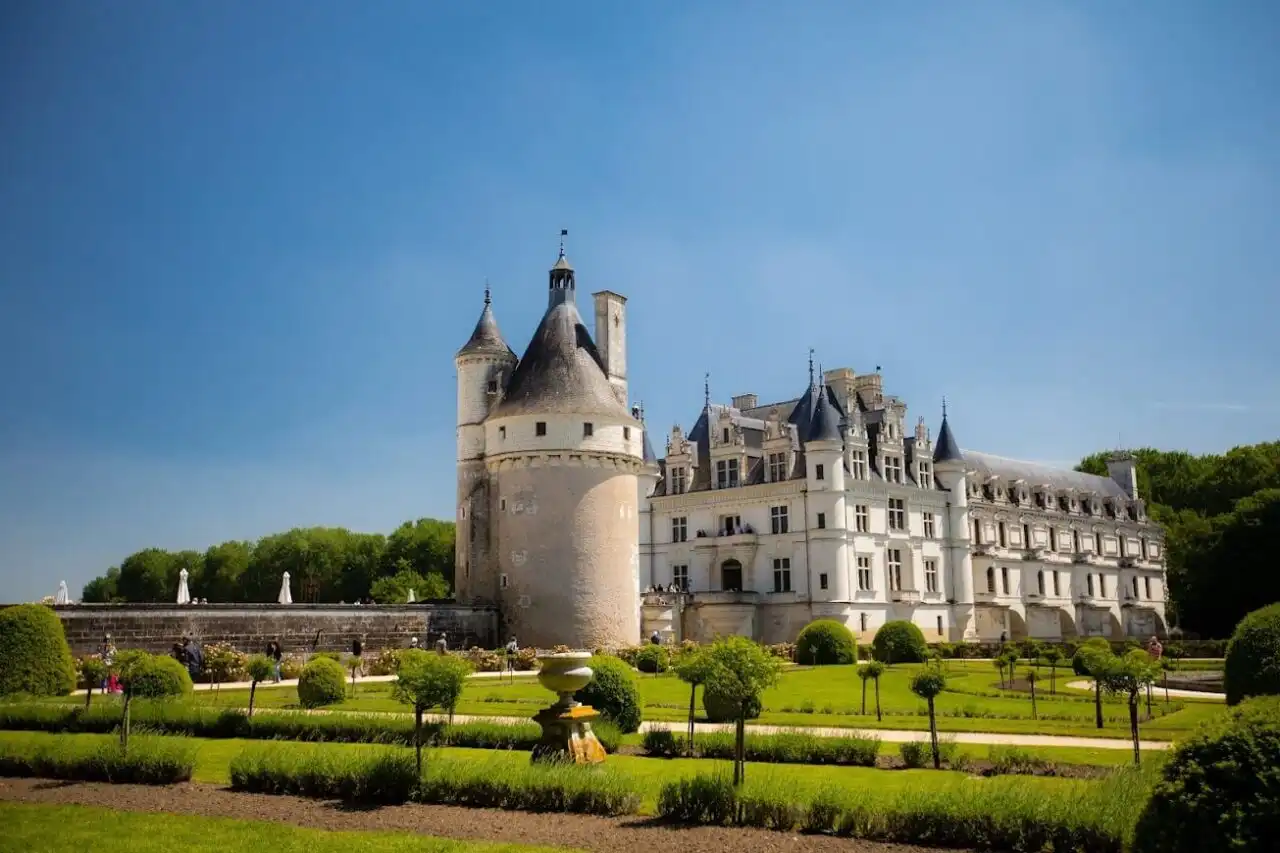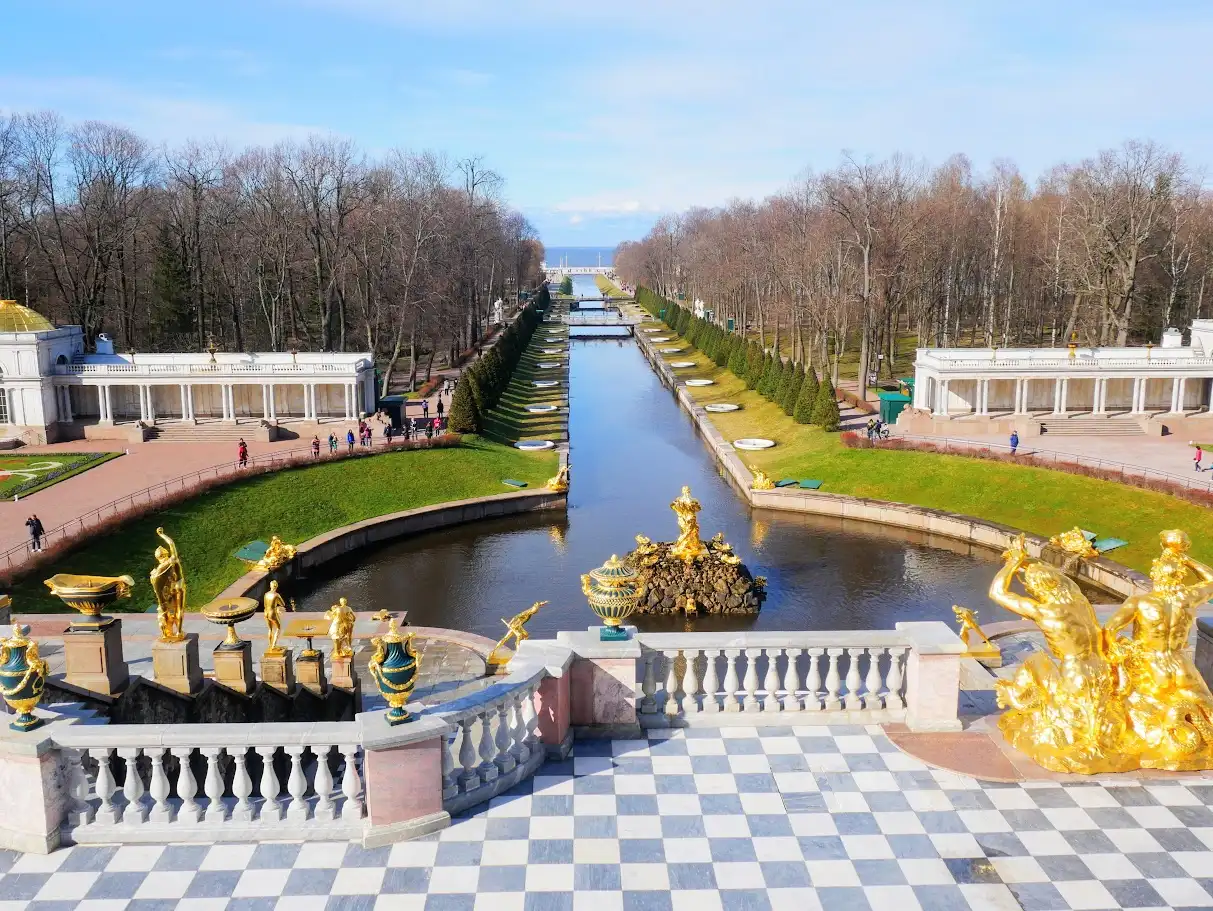I love castles! Ever since I could remember, I was utterly fascinated by them. Their architecture, owners and all the unusual legends about them. Both my BA and MA thesis were about the castles. And my internship, after I’ve finished my studies, was in a castle, as well. Since I’m always looking for new interesting places to visit, I’ve asked some of my fellow bloggers to tell me what are in their opinion most beautiful castles in Europe. And well, here is the list!
Most Beautiful Castles in Europe
#1 – Schloss Ambras in Innsbruck, Austria
A symbol of the power and influence of the Habsburg dynasty, the Ambras Castle in Innsbruck is the city’s most famous landmark.
Located a short distance southeast of the central city, it can be reached easily through the Tunnelplatzweg or by tram. On this hill, a fortification has stood according to records as far back as the 9th century. But, it is in the early 16th century during the reign of Archduke Ferdinand II of Greater Austria that it took its present style.
The Renaissance palace has housed the Archduke’s rich collections of art and armoury since his reign. As such, the Ambras Castle can lay claim to being one of the oldest museums in the world in its original definition. Inside the castle, the grand ballroom known as the “Spanish Hall” is another richly decorated room adorned with paintings of past archdukes. Exhibition of the rare glass-works and the Habsburg portrait gallery recall its grand heritage.
The castle’s grounds resemble a pentagon-shaped layout with the main castle overlooking the Lower Castle below, where many of the artefacts are housed. Of note, when I visited, a rare white peacock was roaming these grounds, originally from India. Such a friendly bird who always appreciates the visitors!
This palace has been a residence of the Habsburg dynasty up until 1918 when it became the property of the Austrian republic. Since the 1950s it has been in the hands of Vienna’s Kunsthistorisches (Art History) Museum who have since taken care of the art and armoury and re-opened to the public soon after.
Jonathan from Journeymaxx
#2 – Schönbrunn Palace, Austria
Did you even go to Vienna if you didn’t go to the Schönbrunn Palace? It’s probably one of our favourite spots in the city.
The Palace started as a mansion for the Roman Emperor Maximilian II, who used the grounds to hunt, back in the 17th century. Schönbrunn Palace, now a UNESCO world heritage site, is one of the finest examples of Baroque architecture in Vienna. However, today, it’s one of the most touristic places in the city. The palace serves as a museum where you can walk around the 1,400 room mansion and admire the lavish lifestyle of royalty past.
To be honest, we had a better time exploring the grounds and walking in the gardens than we did visiting the Palace. Although the latter is not to be dismissed. After all, this is where a six-year-old Mozart gave his first major concert. We recommend taking at least three hours here (Palace and gardens) to really enjoy everything. It’s a good idea to bring a snack and some water if you plan on staying as long.
As we mentioned, this is one of Vienna’s most popular tourist destinations, so be prepared to see large crowds, depending on when you go. Aim to get there at opening, at 8 AM, when there are fewer people around. Also, try and reserve your tour early, as they get booked up fairly quickly. As for the gardens, they are often forgotten and huge, so there aren’t too many crowds there!
*TIP: Our insider tip is to walk up to the Gloriette. It’s a structure located on a 60-meter hill in the Palace’s gardens. It offers the best view of the castle, and of the entire city of Vienna.
Carine & Derek from We Did it our Way
#3 – Castello Scaligero of Malcesine, Italy
Malcesine (pronounced MAL-CHES-INAY) is a beautiful picturesque medieval town in the north of Lake Garda in Italy. Its maze of cobbled
streets sits on the edge of the blue waters of the lake, in the shadow of Monte Baldo – the largest mountain in the Lake Garda region.
Malcesine’s most striking feature is its historical castle, Castello Scaligero. Dating back to 568, the medieval fortress sits proudly in the centre of town on the edge of the lake and is, in my opinion, the most beautiful castle Lake Garda has to offer.
The beauty of Scaligero castle captured the heart of Austrian painter, Gustav Klimt, who painted his ‘Malcesine on Garda’ in 1913. German poet Goethe was equally fascinated by the beauty of Scaliger Castle, and today the castle has its own ‘Goethe Room’ dedicated to the poet.
Entry to the castle is around €6 and includes entrance to the onsite museum. The castle itself is visually stunning, and the views across the lake are extraordinary. For the best panoramic views and photo opportunities, head to the top of the tower.
Kylie from Our World Of Adventure
#4 – Bamburgh Castle, England
Bamburgh Castle is located in Northumberland England on the coastal drive from Seahouses to the Holy Island of Lindisfarne.
Northumberland has more castles than any other county in England so there are lots to visit if you are in the area. Bamburgh Castle is for me the most impressive of them all.
It is perched high on a hilltop over the seaside town of Bamburgh and can be seen for miles around. Traditionally the seat of the kings of Northumbria the castle is still inhabited. In fact, it is the family home of the Armstrong family who has lived there since the 19th century.
The castle has made numerous appearances on TV and film and can be seen in Downton Abbey, Harry Potter (it was Hogwarts in the first 2 films) and Robin Hood.
There are lots of myths and legends surrounding the castle, including claims that there are three ghosts that haunt its corridors.
*TIP: The castle is open to visitors throughout the year, and I highly recommend spending a few hours exploring the castle and grounds if you are driving the Northumberland Coastal Route.
Tracy from Tracys Travels in Time
#5 – Versailles Palace, France
Versailles Palace is the most beautiful castle in France and probably the whole world! It is located in the city of Versailles, 40 km west of Paris. Residence of the Kings of France for two centuries, Versailles is today property of the French Estate, and it is still used for important receptions or events.
Built as a hunting lodge, for King Louis XIII, Versailles was totally remodelled by his son King Louis XIV in French Baroque style. Over time, the Sun King and his successors added other constructions such as Le Grand Trianon, Le Petit Trianon or the hamlet for Queen Marie Antoinette.
The gardens surrounding the Palace are as beautiful as the château itself. The green spaces around the Grand Canal are more wild while the green spaces closer to the castle are French-style gardens and grooves. There is also an Orangerie and a Vegetables Garden which fed with fresh produce the king and his court.
Versailles Palace has an entrance ticket which includes the visit to the other buildings. The French-style gardens are free to visit all the year except during the summer. In summertime, the gardens close to the palace are paid, and visitors can also see the fountains working. The forest and the green spaces around the canal are always free to visit, and they are great to explore by bike.
Elisa from World in Paris
#6 – Pena Palace, Portugal
One of the most beautiful castles in the world, Pena Palace, looks more like a Disneyland attraction than a real castle. Located in picturesque Sintra, Portugal, Pena was built in 1854, and it’s considered to be the prime example of the 19th-century era of Romanticism.
The colourful exterior of the palace owns its extravagance to a couple of eccentric Portugal monarchs. King Ferdinand and Queen Maria II who kept on suggesting various Medieval and Islamic elements, prolonging the construction process for more than 7 years.
Today the castle is protected by UNESCO and is one of Portugal’s most recognisable attractions. If you want to visit the Pena Palace, prepare to get up early. Otherwise you risk being stuck among the staggering number of tourist hordes that flock the castle every day.
*TIP: Don’t skip the interior of the castle. It’s designed to reflect the décor from 1910 when the Portugal monarchs fled to Brazil to escape the Portuguese revolution.
Slavi from Global Castaway
*Read more about the city and Pena Palace in the Sintra Guide here!
#7 – Rheinstein Castle, Germany
The beautiful Rhine River flows through southern Germany, and its valleys are home to some of the most beautiful castles in Europe. One of them is the Rheinstein Castle. It stands out, peering out from among the hills overlooking the majestic river. It is reachable via an intense hike up, but once inside, it is a wonder to see how the nobility of the past lived.
The castle has a drawbridge, an armoury room and an awe-inspiring Knight’s Hall room where intense stained-glass windows highlight the beauty of the space. The views from the exterior balcony overlooking the Rhine River make for beautiful backdrop pictures of Germany’s landscape.
The castle is in a strategic location that proved useful through centuries of conflict. It hosted many royal dignitaries over time including Queen Victoria, and it was rebuilt after it became debilitated over time. The castle was eventually handed over to the Rhine Family. And was donated to the government thereafter to be used as a museum.
Located in Trechtingshausen, the castle is reached via car or by boat through the Rhine River Valley. It is open to the public March-November. The castle also has rooms available for overnight stays.
Diana from The Elusive Family
#8 – Zug Castle in Zug, Switzerland
The original 11th-century castle built on this spot was probably a wooden manor house, which was rebuilt in stone in the 13th century when the city of Zug was founded. This is not a sprawling castle like the ornate mansions you find in France or Russia. In fact, Zug Castle is rather diminutive in size, which is part of its charm.
It looks like a slightly larger-than-average house raised up on a high platform with a crenellated stone wall built around it. The upper story is a higgledy-piggledy, half-timbered building, and from certain angles, it looks like it could topple over at any moment.
The museum inside was refurbished a few years ago and tells the history of the city and canton of Zug. Admission is 10 CHF, and opening hours are pretty limited, so make sure to time your visit accordingly. The castle is open from 2 PM to 5 PM Tuesday to Saturday and 10 AM to 5 PM on Sundays.
Zug is a small town and can easily be visited as a day trip from Zurich, which has many more options for accommodation and restaurants serving international and Swiss cuisine.
Wendy from The Nomadic Vegan
#9 – Vajdahunyad Castle, Hungary
Not all European castles require taking a road trip or a day trip, and this one is the perfect example.
One of the most beautiful yet slightly underrated gems in Budapest is the Vajdahunyad Castle. You wouldn’t normally expect to find such a fairytale castle in the middle of the city, but this little beauty is located in Budapest’s City Park, right behind the iconic Heroes Square. It stands on an artificial island which you can access by four bridges.
This impressive complex dates back to 1896 when it was built to celebrate 1,000 years of Hungarian architecture. It’s supposed to represent a mix of different buildings in the history of Hungary, and it showcases several architectural styles like Baroque, Gothic, and Romanesque.
Nowadays, the Vajdahunyad Castle houses the Hungarian Agricultural Museum, and for 1600 HUF (about 5 Euros), you can visit both the museum and the castle’s Gatehouse Tower. The castle’s courtyards, however, are entirely free to visit all day long, so you can appreciate all the incredible architectural details up close. Each and every angle reveals another gorgeous side of the castle, so be sure to spend at least a couple of hours strolling around this masterpiece.
Or from My Path In The World
#10 – Craigievar Castle, Scotland
Craigievar Castle, near Alford in Aberdeenshire, Scotland, is not particularly big or historically significant or strategically important. It is, however, pink. It looks like a fairy-tale castle from a storybook: higher than it is wide, with fortified, thick walls below and fanciful turrets above. Think Rapunzel and her hair.
Inside, visitors can get a realistic idea of what life was like for the Forbes family, who lived in Craigievar Castle for 350 years. When the last of them moved out, he left the furnishings untouched, and it seems that, given the lack of electricity or central heating, the family hadn’t updated much over the generations.
The castle may only be viewed on one of the guided tours which begin every half hour. As visitors climb the circular staircase – pink granite – they pass through the great hall, bedrooms, servants’ quarters and so on, and the guide tells lovely stories of ghosts, clan feuds, witches’ marks and visiting queens. None of the interior looks very grand; on the contrary, it’s rather cosy inside. Yet it gives an insight into the lives of the clan lairds and their servants in Scotland.
Rachel from Rachel’s Ruminations
*Read more about Craigievar Castle here.
#11 – Peles Castle, Romania
One of the most beautiful castles in Romania, Peles Castle, is located just 120 kilometres outside Bucharest (the capital of the country) and can be visited on a day trip. Peles castle was built in the 19th century by the first Romanian king, Carol I, as a summer royal residence. The king went to Sinaia (the resort next to Peles Castle) to hunt and fell in love with the fantastic scenery of the Carpathian Mountains, so he decided he wants a castle there.
Peles Castle can be visited every day from Tuesday to Sunday. In November it is closed for the annual cleanup, but if you arrive then, you can visit its little brother, Pelisor Castle. Except for the amazing landscape that surrounds it, Peles Castle surprises its guests with the opulence of its rooms and the stunning details inside: German stained-glass windows, Murano crystal chandeliers, Cordoba leather-covered walls, a small elevator and a secret door from the library to the King’s bedroom.
Peles Castle was the first castle in Europe with electricity, and it had from the beginning a central vacuum system, hot and cold running water and central heat.
Corina from Another Milestone
#12 – Lancut Castle, Poland
Lancut Castle is probably one of the most beautiful aristocratic residences in Poland. It was designed by a Dutch architect and was built during the first half of the 17th century. Both a residence and a fortress, the castle’s design was made to both awe and protect. Surrounding the Baroque façade of the castle’s exterior is a park complex filled with grand pavilions, quaint farm buildings, and a remarkable collection of horse-drawn carriages, reminiscent of a long-gone era.
With an extravagantly majestic interior to match, each room tells a story of the era in which it was it was designed. Although they are no longer in their original form, the Great Vestibule, Room Under the Wooden Ceiling, and the Zodiac Room are the most well-preserved. Another feature of Lancut Castle is the greenhouse which houses an impressive variety of orchids.
Lancut Castle is open to the public and tickets can be bought from the castle ground. Opening times depend on the season, and ticket prices are based on the sections that you intend on visiting. For an extra fee, audio guides, tour guides, and sleigh rides around the park can also be included in your package.
Karolina from Lazy Travel Blog
#13 – Miramare Castle, Italy
Built by the Habsburgs in the 19th century, Miramare Castle doesn’t quite look like a castle you’d expect to find in Italy.
This is no crumbling medieval fortress; brilliantly white and entirely beautiful, Miramare Castle looks like something that stepped out of a fairytale, as does the scenery surrounding it.
The terraces surrounding the castle, not to mention the sprawling Miramare Park located right next door, boast absolutely magnificent views of the Adriatic Sea.
Used as a private home for the Habsburgs, a home for an Italian politician, and later as a military outpost for a couple of Allied militaries, including US troops after WWII, Miramare Castle has stacked up quite the history in its relatively short life as a castle.
It is best accessed as a day trip from the coastal city of Trieste in the northeastern Friuli-Venezia Giulia region of Italy. It’s only around 15 minutes from Trieste by bus or car.
You can also visit Miramare Castle as a day trip from Venice. However, you’ll want your own car for that! The castle is a little under 2 hours from Venice by car, but it is cumbersome to reach by public transportation.
Kate from Our Escape Clause
#14 – Caerphilly Castle, Wales
One of the most beautiful castles in Europe, in my opinion, is Caerphilly Castle in Wales. A medieval castle in the centre of the town it is named after originates from the late 13th century and is the second-largest castle in Britain. It has a double moat system, something which is not very common among British castles.
Caerphilly Castle has many areas to explore, including towers, battlements, a Great Hall and wards. Although be warned, the castle is a wedding venue, and if one is taking place during your visit, the Great Hall will not be accessible.
Caerphilly Castle also has some exceptional residents, two dragons and their babies, in a relatively new addition to the castle, the Dragon’s Lair. You can view the dragons, learn about the folklore of Welsh dragons and about some of the history of Wales and its great Princes. There is also a maze at the rear of the castle, which is fun if you are visiting Caerphilly Castle with kids.
An interesting fact about Caerphilly Castle is that the southeast tower leans to a higher degree than the Leaning Tower of Pisa. Caerphilly Castle can be visited during a visit to the Welsh capital of Cardiff as the city and town are linked by a direct train line. It’s truly a beautiful castle, not-to-be-missed.
Cath from Passports and Adventures
#15 – Neuschwanstein Castle, Germany
On a forested hill in the German region of Bavaria, stands Neuschwanstein Castle, one of the most recognizable and beautiful castles in Europe.
Neuschwanstein Castle, with its turrets, towers, balconies and pinnacles, looks as though it was lifted from the pages of a children’s fairy tale book. Its appearance is so romantic that it has been featured in many movies, even inspiring the design of Disneyland’s Sleeping Beauty Castle.
Construction of Neuschwanstein Castle began in 1869, in accordance to the fantastical plans dreamed up by King Ludwig II. His five-story palace was never fully completed, but the rooms that were finished are richly decorated, an over-the-top extravagance fit for an eccentric king.
The castle can be visited by guided tour only and rushes visitors through a small section of the castle. The most impressive room is the Singers’ Room, a concert hall that is embellished with lavish decorations. Another highlight is viewing the castle from the Marienbrücke bridge, which also offers an elevated view of a nearby waterfall.
*TIP: Neuschwanstein Castle is located near the small village of Hohenschwangau. It’s about a 1-hour 40-minute drive from Munich, so can be visited on a day trip.
Rhonda from Travel? Yes Please!
*Read more about Neuschwanstein Castle here!
#16 – Predjama Castle, Slovenia
Predjama Castle, in the Inner Carniola region of south-central Slovenia, is the largest cave castle in the world. It was constructed in the 12th century by Erazam, a robber baron who many saw as a ‘Robin Hood’ figure. He took refuge in the castle in 1483 after killing a marshal and survived seize using secret tunnels to bring in food and water. Unluckily Erazam was later killed by a cannon-ball while using the long drop!
The castle is five floors high, and you can visit the rooms, including the armoury, as well as climb up into the cave at the top. Back at the bottom of the castle is the tournament field, once used by jousting knights. You can see them in action during July when the castle has a medieval feast and re-enactments going on. Before you leave, don’t forget to ring the bell at the top of the castle. Once used to warn of attack, today it is supposed to bring good luck!
*TIP: Predjama Castle is often visited alongside the Postojna Cave, just a few minutes drive apart by car. It makes a great day out in this part of Slovenia, and together they’re a couple of the most-visited sights in the country.
Heather from Conversant Traveller
*Read more about Predjama Castle here!
#17 – Arundel Castle, England
Close to the Sussex coastline in southern England (an easy day trip from nearby Brighton), Arundel Castle has built quite a reputation as a place that belongs in a fairytale. It was built during the medieval times, under William the Conqueror.
Once a year they hold a festival and duck race along the River Arun which is sure to be a hit with families. Tickets to get you inside the castle are valid for a full year, which is a good thing because the lavish interiors of the castle are vast. Full of queenly beds, tapestries and suits of armour – so have a good wander in there.
And what is there to experience – other than 1000 years of history? Well, there’s the opulent gardens and a vaulted restaurant and cafe where you can fill up on a hot meal. Then you’ll be lost in the private chapel attached to the castle, and you can round it all off with a visit to Arundel Museum. It’s not one of those stuffy museums, but an interactive affair with family event days, exhibits and a shop.
Dani from Live in 10 Countries
#18 – Real Alcázar in Seville, Spain
The Real Alcázar of Seville sits at the edge of the historic Santa Cruz neighbourhood. It was built as the palace of King Peter of Castile in the 14th century. “But wait,” you’ll say when you see this ornate castle, “the Real Alcázar looks way older than that. And it definitely doesn’t look like it was built by a guy named Peter.”
King Peter (the Cruel or the Just, depending on which books you read) wasn’t the first to deck-out this plot of land. When you visit, you’ll probably wonder whether he contributed much at all. The architecture and the ornamentation come directly from the Moorish style. In fact, the beginnings of the current Alcázar date back to the 8th century, with most of the palace and fortress being added over the centuries before Peter even came on the scene.
In more recent history, the castle’s beauty was praised and publicized by filmmakers in the 1962 Lawrence of Arabia and the much more recent HBO series ‘Game of Thrones’ (it’s the set of Sunspear, the capital of Dorne in season 5).
*TIP: The castle functions as a museum now. Visitors can pay €11.50 for a standard ticket to tour the castle and the extensive gardens. When visiting during the summer, it’s strongly recommended to visit early in the morning as the heat will often cut your visit short.
Art from The Broke Backpacker
#19 – Chenonceau, France
The Loire Valley region in France hosts more than 300 castles, including Chenonceau, one of the most famous French castles. It has features to please all kinds of visitors. The way it climbs the river is stunning. You can enjoy the views from the side or hop on a small boat for a different angle. The castle also has beautiful gardens. You can wander in the maze or admire the higher views from one of the castle’s windows.
Once you enter the 16th-century castle, you go back in time to learn about the gossips of the French Kings and Queens — among other historical facts. The audio guide was fascinating, and the rooms were well decorated and made me feel I was in a movie.
The castle is open every day all year round. During the high season in summer, there are special events, including the opportunity to visit the castle by night.
*TIP: The castle is around 200km away from Paris. It takes about 2 hours to drive there for the day, or you can easily find a tour from Paris. Alternatively, the high-speed train (TGV) will take you from Paris to Tours in one hour, and you can then catch another train to Chenonceau station for about half an hour. The station is 400 meters away from the castle.
Eloise from My Favourite Escapes
#20 – Bran Castle, Romania
Or more commonly known as Dracula’s Castle, is quite possibly the most famous place to visit in Romania. A region most people aren’t even sure is real, Transylvania, is where this castle lives and I can assure you, it’s a very real place!
Transylvania is a gorgeous region in Romania with tons of things to do, beyond the Dracula theme. It all started with Bram Stoker’s book, which depicted this imaginary Dracula’s Castle. The image looks very much like Bran Castle in Romania and has since been dubbed Dracula’s Castle. Although Stoker himself had never been to Romania.
The castle can be wandered through on your own or with a guided tour explaining the history of the castle. It’s certainly a place that most people are dying to see in Romania, but there are plenty more things to do in Transylvania!
Nina from Where in the World is Nina
#21 – Peterhof Palace, Russia
And the last one is my recommendation for one of the most beautiful castles in Europe!
Peterhof Palace is located very close to Saint Petersburg, and it could be visited on a day trip from there. Peter the Great built is as his summer palace, and he’s filled it with paintings he brought from his European voyages. Although much smaller initially, both the palace and gardens were enlarged a bit by every new ruler. Peter the Great was inspired by some French palaces built by king Louis XIV. That’s why Peterhof is often called ‘Russian Versailles’ and is today UNESCO World Heritage site.
When you approach the palace, you’ll first see the ‘Upper gardens’ with its geometrical paths between the trees and white marble statues. However, ‘Lower gardens’ are located between the palace and the seashore. And that’s where the majority of the fountains are. You can spend a few hours only by walking through these beautiful labyrinths made of trees.
*TIP: If you didn’t have a lot of time, I would go straight to the ‘Lower gardens’, take a look at fountains and would take a walk towards the seashore.
*Read more about Peterhof Palace here!
There are so many beautiful castles in Europe, it was quite hard to pick 21 for this list. However, there are always new to discover. What are some of your favourite and most beautiful castles in Europe? Let me know in the comments below!



